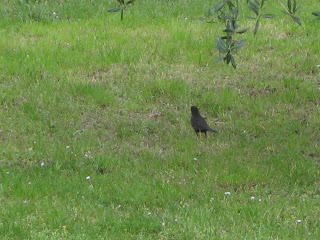Last week I went on holiday to Tuscany with my wife and mother-in-law. We
had a blast – I can’t recommend Tuscany
highly enough as a holiday destination!
On the bird-front, I heard more than I saw – we were staying
in a hilltop village called Panzano which is about half-way between Florence and Siena
on the 222 ‘Chianti’ route.
I didn’t take my binoculars as we had to adhere to Ryanair's
baggage weight allowances, but I did see quite a few birds on my walks around
the village – lots of Tree Sparrows (recognisable by their brown caps), some Starlings,
Blackbirds, Collard Doves, Woodpigeons, Magpies, Jackdaws and at one point I swear blind I saw a
Buzzard circling over the fields looking for rabbits.
There were also plenty of evidence of nests! Most of the
buildings in Panzano are pretty old so there are lots of cracks in the walls
that birds seemed to be flying in and out of all the time.
I didn’t get many chances to take photos but here’s what I
did manage.
Starling.
A bird was flying in and out of this crack in the wall but it was so quick I couldn't identify it.
Male Blackbird.
Collard Dove.

 .
.


